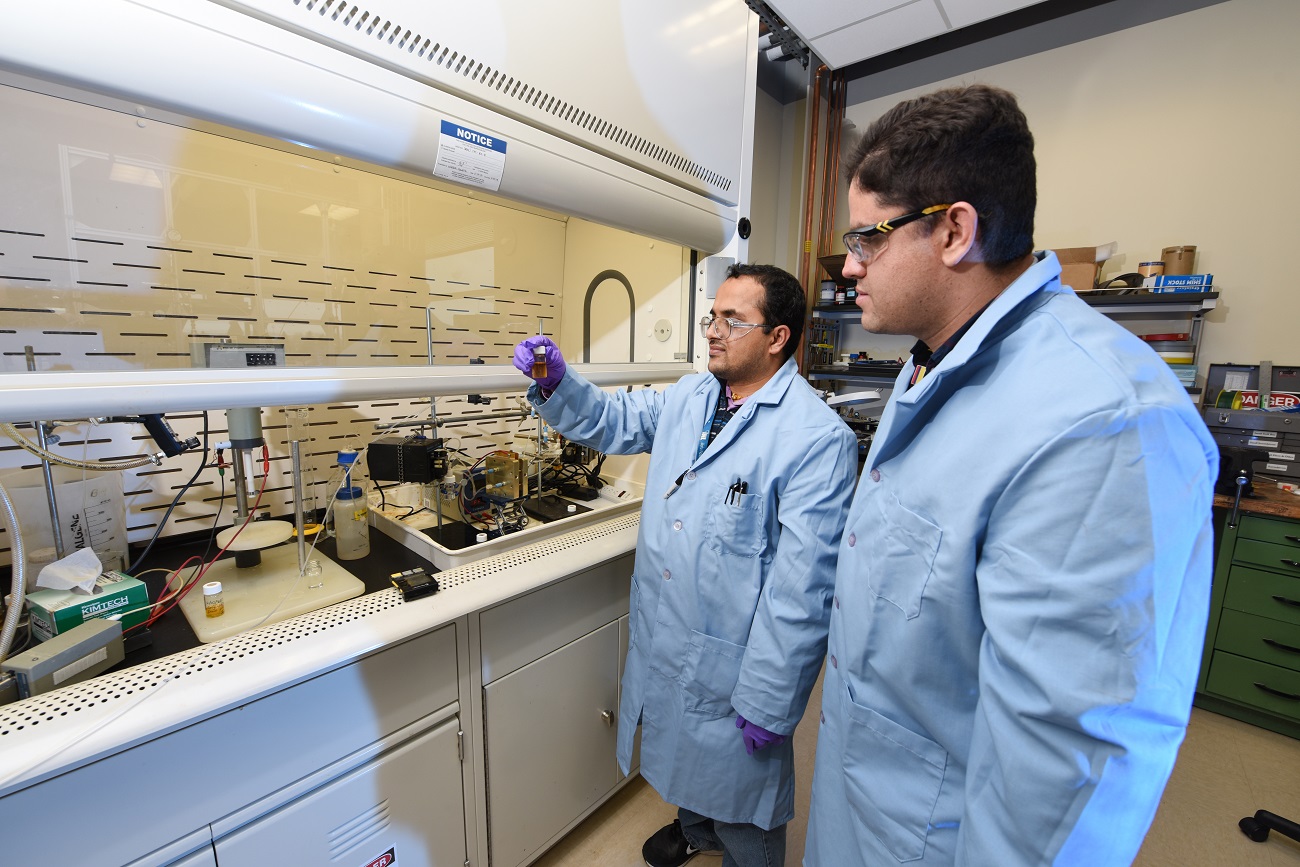New technique could make captured carbon more valuable
IDAHO FALLS — Carbon capture could help the nation’s coal plants reduce greenhouse gas emissions, yet economic challenges are part of the reason the technology isn’t widely used today. That could change if power plants could turn captured carbon into a usable product.
Scientists at the U.S. Department of Energy’s Idaho National Laboratory have developed an efficient process for turning captured carbon dioxide into syngas, a mixture of H2 and CO that can be used to make fuels and chemicals. The team has published its results in Green Chemistry, a publication of the Royal Society of Chemistry.
Traditional approaches for reusing the carbon from CO2 involve a reduction step that requires high temperatures and pressures. At lower pressures, the CO2 doesn’t stay dissolved in water long enough to be useful. The process developed at INL addresses this challenge by using specialized liquid materials that make the CO2 more soluble and allow the carbon capture medium to be directly introduced into a cell for electrochemical conversion to syngas. In short, it provides industrially relevant conversion rates, unlike other systems.
“For the first time it was demonstrated that syngas can be directly produced from captured CO2 – eliminating the requirement of downstream separations,” the researchers wrote in the Green Chemistry paper.
The newly described process uses switchable polarity solvents (SPS), liquid materials that can shift polarity upon being exposed to a chemical agent. This property makes it possible to control what molecules will dissolve in the solvent.
In an electrochemical cell, water oxidation occurs on the anode side, releasing O2 gas and hydrogen ions that then migrate through a membrane to the cathode side. There, the hydrogen ions react with bicarbonate (HCO3-, the form in which CO2 is captured in the SPS), allowing the release of CO2 for electrochemical reduction and formation of syngas. Upon the release of CO2, the SPS switches polarity back to a water-insoluble form, allowing for the recovery and reutilization of the carbon capture media.
Luis Diaz Aldana, principal investigator on the experiment, and Tedd Lister, one of the researchers, conduct electrochemical research at INL. In 2015, while having lunch with colleagues Eric Dufek and Aaron Wilson, they hit on the idea of using switchable polarity solvents to turn CO2 into syngas.
The team received Laboratory Directed Research and Development funds in 2017. As promising as the idea was, in the first experiments, too much hydrogen and not enough syngas was being produced. The results improved when the team introduced a supporting electrolyte to increase the ionic conductivity. Adding potassium sulfate increased electrolyte conductivity by 47 percent, which allowed the efficient production of syngas.
When syngas can be produced from captured CO2 at significant current densities, it boosts the process chances for industrial application. Unlike other processes that require high temperatures and high pressures, the SPS-based process showed best results at 25 degrees C and 40 psi.
INL’s team has filed a provisional patent and is discussing the approach with a Boston area company involved in electrochemical technology research and development, Lister said.
“It integrates two areas that have been on parallel tracks: carbon capture and sequestration (CCS) and CO2 utilization,” said Diaz Aldana. “The problem with CCS has been its economic feasibility. If you can get some extra value out of the CO2 you are capturing, it’s a different story.”







